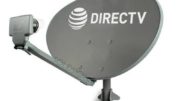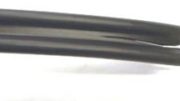A while back I was talking to a loyal customer who asked me if it was possible to get an electric shock from a coax cable. Let’s say, a lot of red flags were raised by that question. I’m going to put this in big letters:
You should never get a big shock from a coax cable. If you get shocked by a coax cable, call an electrician NOW.
Seriously.
A coaxial cable is capable of carrying current. If the center conductor of the cable is solid copper, it carries it quite well. Solid copper core RG6 is used to power amplified antennas and satellite dishes all the time. It’s not suitable for carrying the amount of current you’d get from a wall outlet, though. While it would work for a short time, carrying 110 volts and up to 10 amps would create a lot of heat which would cause the cable to fail. It’s just not designed for that.
If you are able to feel a real shock when you touch a coax cable, you should probably call an electrician even before you finish reading this article. The sooner the better.
How much current can travel safely through a coax cable?
DIRECTV satellite equipment works with a power inserter that routinely sends 29 volts at 1.4 amps through a cable. This is enough to give you a tingle if you touch the center conductor, but you should never feel a shock just by touching the outer connector.
I’m sure there are other devices that send more current up a coax cable but I’m not familiar with them. So I’m comfortable saying you should never put more than 29V/1.4A (~40 watts) through a coax cable. You shouldn’t have to. Most antenna amplifiers put only about 5 volts through a cable.
Why can’t you put more through a coax cable?
It comes down to the thickness of the copper center conductor, and also the dielectric foam that’s in the center of the cable. The foam is designed to let the signal “expand” into that space and provide a better path for it to travel. While the white dielectric foam is fairly safe, it’s not designed for extremely high heat applications. If you were to put a lot of current through a wire that wasn’t designed for it, you’d generate a lot of waste heat. This could cause the foam to fail and with it, the entire cable.
The other issue is the braid around the cable. When used for signal, a coaxial cable only carries signal on the center conductor. The outer braid is used for shielding. When carrying current, the outer braid acts as the neutral leg. It’s far more delicate than the center conductor and also could have the capacity to fail spectacularly.
Seriously, electricity is no joke.
If you’re getting more than just a tiny shock from your cables, something is wrong. It could be something as simple as bad grounding but it could also be a sign that the cable isn’t being used as it was intended. A failed cable could start a fire and that could destroy your entire home. This is a very serious thing and please, please, get a professional to look at things if you are worried in the least.





